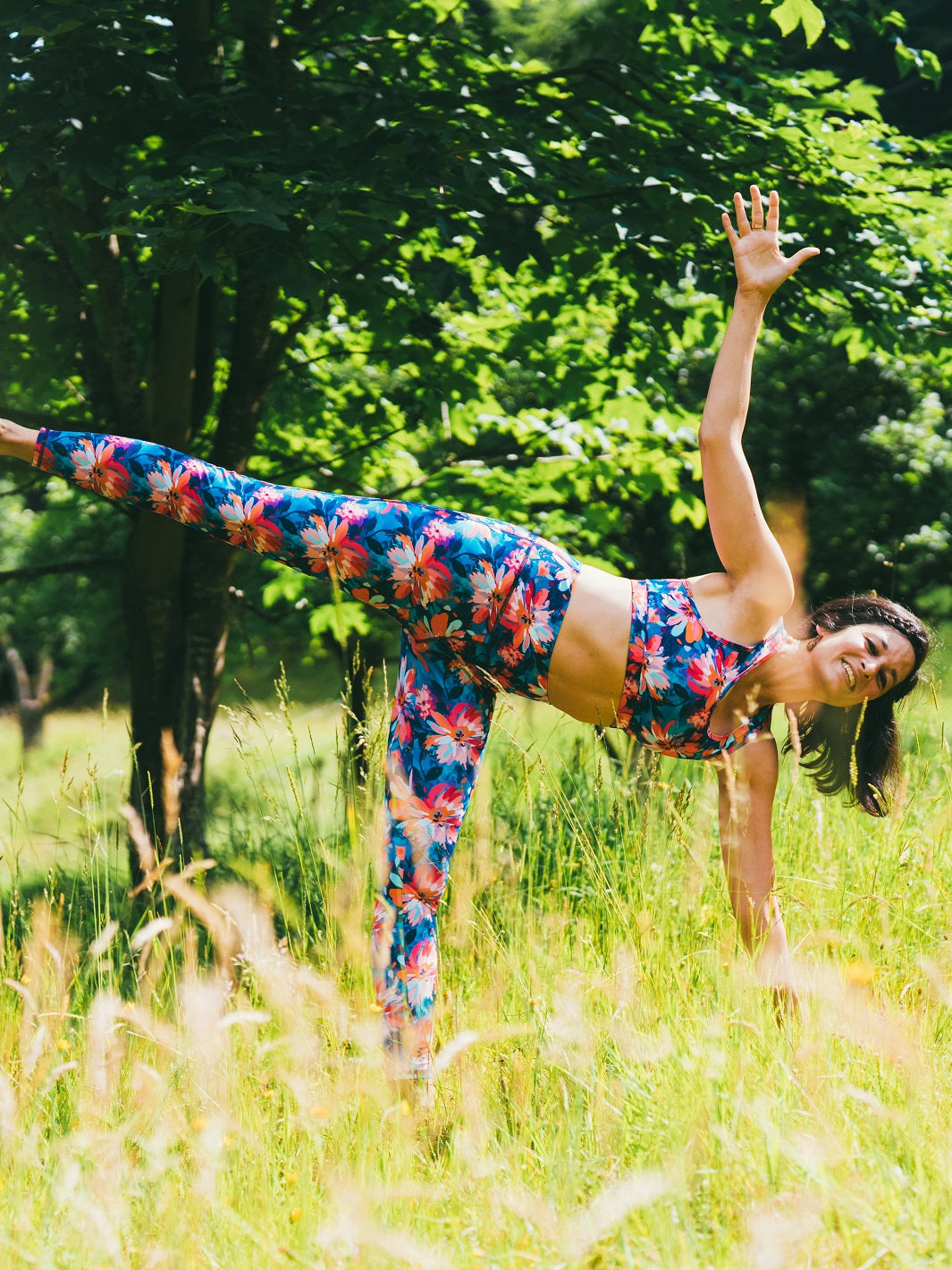Yoga is an ancient discipline based on five main principles: postures (asanas), breathing (pranayama), relaxation, healthy eating and positive thinking.
Among them, breathing plays a fundamental role.
In Sanskrit, prana means "life energy" and ayama means "extension" or "control."
Pranayama is therefore the art of mastering the breath to harmonize the vital energy of the body and mind.
Much more than a simple physiological act, conscious breathing is a real key to improving concentration, calming the mind and revitalizing the body.
In this article, we'll explore the centrality of breathing in yoga, the benefits of pranayama , and several essential techniques for incorporating this practice into your daily routine.

1. The importance of breathing in yoga
Breathing is one of the five pillars of yoga.
It is essential not only for oxygenating the body but also for channeling vital energy.
In yogic practices, breathing is closely linked to postures and meditation.
Smooth, controlled breathing promotes stability in asanas and a calm mind during relaxation or meditation.
According to yogic philosophy, our physical and mental well-being is directly influenced by the way we breathe.
Rapid, shallow breathing fuels stress and restlessness, while slow, deep breathing invites calm and serenity.
This is where pranayama comes in, a discipline aimed at regulating the breath to maximize its benefits.
Breathing is intimately linked to the circulation of prana through the nadis , energy channels that run throughout the body.
According to yogic tradition, there are about 72,000 nadis , but three are particularly important:
- Ida , connected to the left nostril, symbolizing lunar and soothing energy.
- Pingala , connected to the right nostril, associated with solar and dynamic energy.
- Sushumna , the central channel that runs along the spine and plays a key role in spiritual awakening.
Pranayama techniques help harmonize these energy flows by regulating inspiration, expiration and breath retention ( kumbhaka ).
Each exercise acts on the mind and body in a specific way: some soothe and clarify the mind, others stimulate and energize the body.

2. The benefits of pranayama
Practicing pranayama regularly provides many benefits:
- Improved focus and mental clarity : Controlled breathing promotes a calmer mind and a better ability to focus.
- Stress and anxiety reduction : By acting on the parasympathetic nervous system, pranayama helps reduce the production of cortisol, the stress hormone.
- Increased lung capacity : Breath training strengthens the lungs and optimizes their function.
- Energy balance : Certain techniques help to harmonize the body's energies and improve the circulation of prana .
- Body detoxification : Deep breathing promotes the elimination of toxins and purifies the body.
These benefits make pranayama an ideal practice for improving general well-being and accompanying any yoga session.

3. The main techniques of pranayama
There are several pranayama exercises, each with specific effects on the body and mind. Here are some must-try techniques to explore.
3.1 Kapalabhati Pranayama – Luminous Skull Breathing
Kapalabhati means "luminous skull" in Sanskrit. It is a dynamic breathing technique that acts as a true inner cleansing.
- How to practice?
- Sit comfortably with your back straight.
- Inhale deeply through your nose.
- Exhale quickly and forcefully by contracting the abdomen, as if you were expelling the air in a series of short breaths.
- Repeat for several cycles.
- Benefits
- Purifies the respiratory tract.
- Stimulates blood circulation and oxygenates the brain.
- Revitalizes the body and energizes the mind.
⚠️ Avoid if pregnant or suffering from high blood pressure.
3.2 Nadi Shodhana Pranayama – Alternate Nostril Breathing
Nadi Shodhana means "purification of energy channels." It is a gentle technique that balances the body's energies.
- How to practice?
- Use your right hand to alternately plug one nostril.
- Inhale through your left nostril, then close it and exhale through your right.
- Inhale through the right, close it, then exhale through the left.
- Continue this cycle for a few minutes.
- Benefits
- Soothes the mind and reduces stress.
- Harmonizes the hemispheres of the brain.
- Improves concentration and mental clarity.
3.3 Anulom Vilom Pranayama – The Gentle Variation of Alternate Nostril Breathing
Similar to Nadi Shodhana , Anulom Vilom is practiced without breath retention and is ideal for beginners.
- How to practice?
- Inhale through your left nostril, then exhale through your right.
- Inhale through the right, then exhale through the left.
- Repeat for several minutes.
- Benefits
- Reduces anxiety and calms the mind.
- Promotes smoother, more natural breathing.
- Stimulates the circulation of vital energy.
3.4 Shitali Pranayama – Cooling Breath
This technique refreshes the body and soothes the mind, ideal in summer or after intense physical exertion.
- How to practice?
- Roll your tongue into a tube (or, if you can't, purse your lips slightly).
- Inhale deeply through your mouth, letting the air pass over your tongue.
- Exhale slowly through your nose.
- Benefits
- Lowers body temperature.
- Calms emotions and reduces anger.
- Naturally hydrates the respiratory tract.
3.5 Complete (or yogic) breathing
This is the basis of all breathing in yoga, combining abdominal, thoracic and clavicular breathing.
- How to practice?
- Inhale by first expanding your belly, then your rib cage, and finally the top of your lungs.
- Exhale slowly, first releasing the collarbones, then the chest and finally the belly.
- Benefits
- Increases lung capacity.
- Brings deep relaxation.
- Improves oxygenation of the body.

4. How to integrate pranayama into your practice?
Pranayama is ideally practiced in a calm environment, in a comfortable seated position, with the back straight to promote a smooth flow of breath. It can be incorporated before or after a yoga session, depending on the desired effects:
- Before practice, to prepare the body and mind by providing concentration and energy.
- After practice, to prolong the state of relaxation and grounding.
Certain techniques, such as Ujjayi breathing, are also used during the sequence of postures, particularly in vinyasa or ashtanga yoga , in order to maintain a fluid and meditative rhythm.
Pranayama is often combined with mudras (hand gestures) to amplify its energetic effects.
For example, Nadi Shodhana alternate nostril breathing is practiced with Vishnu Mudra , a specific finger position that facilitates breath control.

Conclusion
Breathing is much more than just gas exchange: it is the link between body and mind, a key to better managing stress and improving overall well-being.
Pranayama techniques offer an accessible and powerful approach to cultivating life energy, calming the mind, and strengthening vitality.
Whether you are a beginner or an experienced yogi, incorporating a few minutes of conscious breathing into your daily life can transform your practice and your inner balance.
So, take a deep breath… and let yourself be guided by the breath of yoga.






Leave a comment